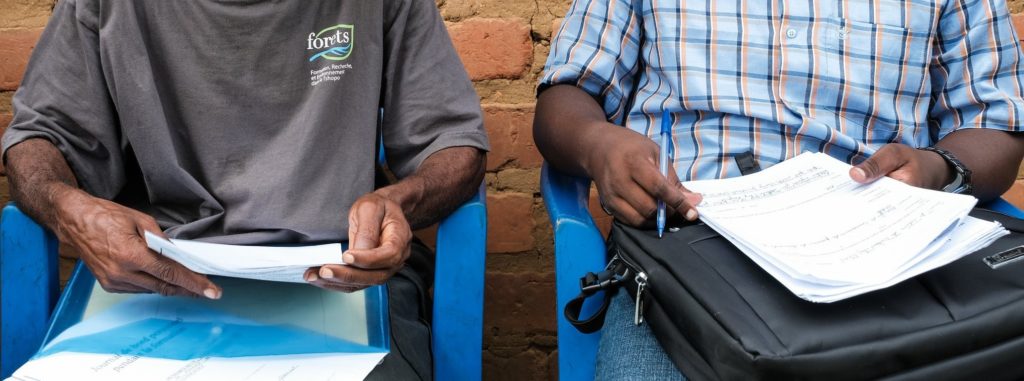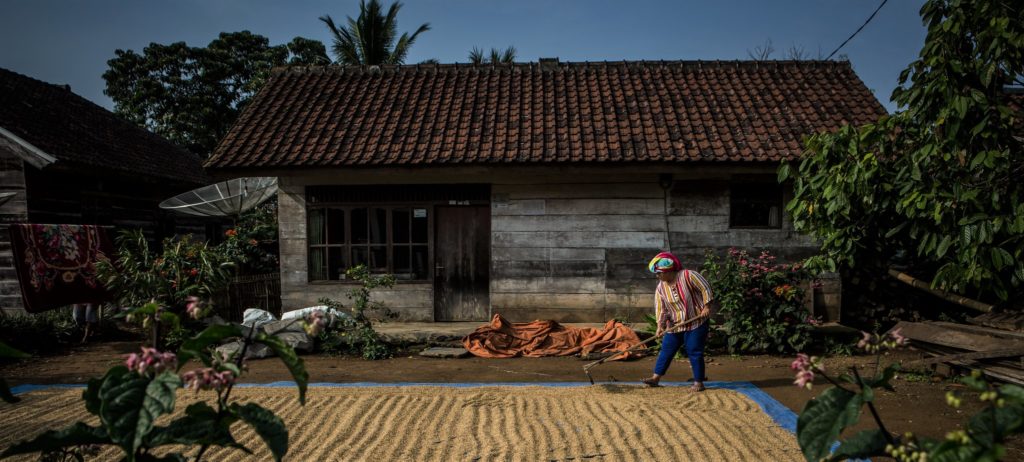100Q: Boosting household survey data usability with 100 core questions
CGIAR socio-economic researchers have developed a standardized set of farm household survey questions to improve dataset comparability over space and time.
Leading agricultural socio-economists developed the 100Q report, which outlines 100 core questions to identify key indicators around agricultural activities and off-farm income, as well as key welfare indicators focusing on poverty, food security, dietary diversity, and gender equity.
The aim is to forge an international standard approach to ensure socio-economic data sets are comparable over time and space, said Mark Van Wijk, the lead author of the recent report published through CGIAR Platform for Big Data in Agriculture.
Agricultural researchers interview hundreds of thousands of farmers across the world every year. Each survey is developed with a unique approach for a specific research question. These varied approaches to household surveys limit the impact data can have when researchers aim to reuse results to gain deeper insights.
“A standard set of questions across all farm household surveys means researchers can compare different data points to identify common drivers of poverty and food insecurity among different populations to more efficiently inform development strategies and improve livelihoods,” said Van Wijk, a senior scientist at the International Livestock Research Institute (ILRI).
Finding common ground among data collection efforts is essential for optimizing the impact of socio-economic data. Instead of reinventing the wheel each time researchers develop surveys, researchers in the CGIAR’s Community of Practice on Socio-Economic Data (CoP SED) formed core questions they believe should become the base of all farm household surveys to improve the ability for global analysis.
CoP SED is promoting the use of the 100Q report as building blocks in survey development through webinars with international agricultural researchers. The community is also doing further research into tagging existing survey data with ontology terms from the 100Q to improve reusability.
Harmonization key to the fair use of data

Photo: Axel Fassio / CIFOR. Bengamisa, DRC.
Managing shared data is becoming increasingly important as we move towards an open data world, said Gideon Kruseman, leader of the CoP SED and author of the report.
“For shareable data to be actionable, it needs to be FAIR: findable, accessible, interoperable and reusable. This is the heart of the Community of Practice on Socio-Economic Data’s work.”
At the moment, international agricultural household survey data is disorganized; the proliferation of survey tools and indicators lead to datasets which are often poorly documented and have limited interoperability, explained Kruseman.
It’s estimated that CGIAR—the world’s largest network of agricultural researchers—conducts interviews with around 180,000 farmers per year. However, these interviews have lacked standardization in the socio-economic domain for decades, leading to holes in our understanding of the agriculture, poverty, nutrition, and gender characteristics of these households.
The 100Q tool has been systematically designed to enable the quantification of interactions between different components and outcomes of agricultural systems, including productivity and human welfare at the farm and household level, said Kruseman, a Foresight and Ex-Ante Research Leader at the International Maize and Wheat Improvement Center (CIMMYT).
Streamlining survey data through the world’s largest agricultural research network

Phto: Kate Evans/CIFOR. Aerial view of the landscape around Halimun Salak National Park, West Java, Indonesia.
Using these building blocks should become standard practice across CGIAR. The researchers hope standardization across all CGIAR institutes will allow for easier application of big data methods for analyzing the household level data themselves, as well as for linking these data to other larger scale information sources like spatial crop yield data, climate data, market access data, and roadmap data.
Researchers from several CGIAR research organizations, the Food and Agriculture Organization of the United Nations, and agricultural nonprofits worked to create the common layout for household surveys and the sets of ontologies underpinning the information to be collected.
“Being able to reuse data is extremely valuable. If household survey data is readily reusable, existing data sets can be used as baselines. It allows us to easily assess how welfare indicators vary across populations and different agro-ecological and socioeconomic conditions, as well as how they may change over time,” Kruseman said.
“It also improves the effectiveness of interventions and the trade-offs between outcomes, which may be shaped by household structure, farm management, and the wider social-environmental.”
CoP SED researchers work in three groups towards improving socio-economic data interoperability. The 100Q working group focuses on identifying key indicators and related questions that are commonly used and could be used as a standard approach to ensure data sets are comparable over time and space. The working group SEONT focuses on the development of a socio-economic ontology with accepted standardized terms to be used in controlled vocabularies linked to socio-economic data sets. The working group OIMS focuses on the development of a flexible and extensible, ontology-agnostic, human-intelligible, and machine-readable metadata schema to accompany socio-economic data sets.
For more information, visit the CoP SED webpage.
Feature photo: Ulet Ifansasti / CIFOR. A paddy in front of a house in Tri Budi Syukur village, West Lampung regency, Lampung province, Indonesia.
May 20, 2020
Matthew O’Leary and Hannah Craig
CGIAR Platform for Big Data in Agriculture
27 - 27Shares
Latest news
27 - 27Shares






